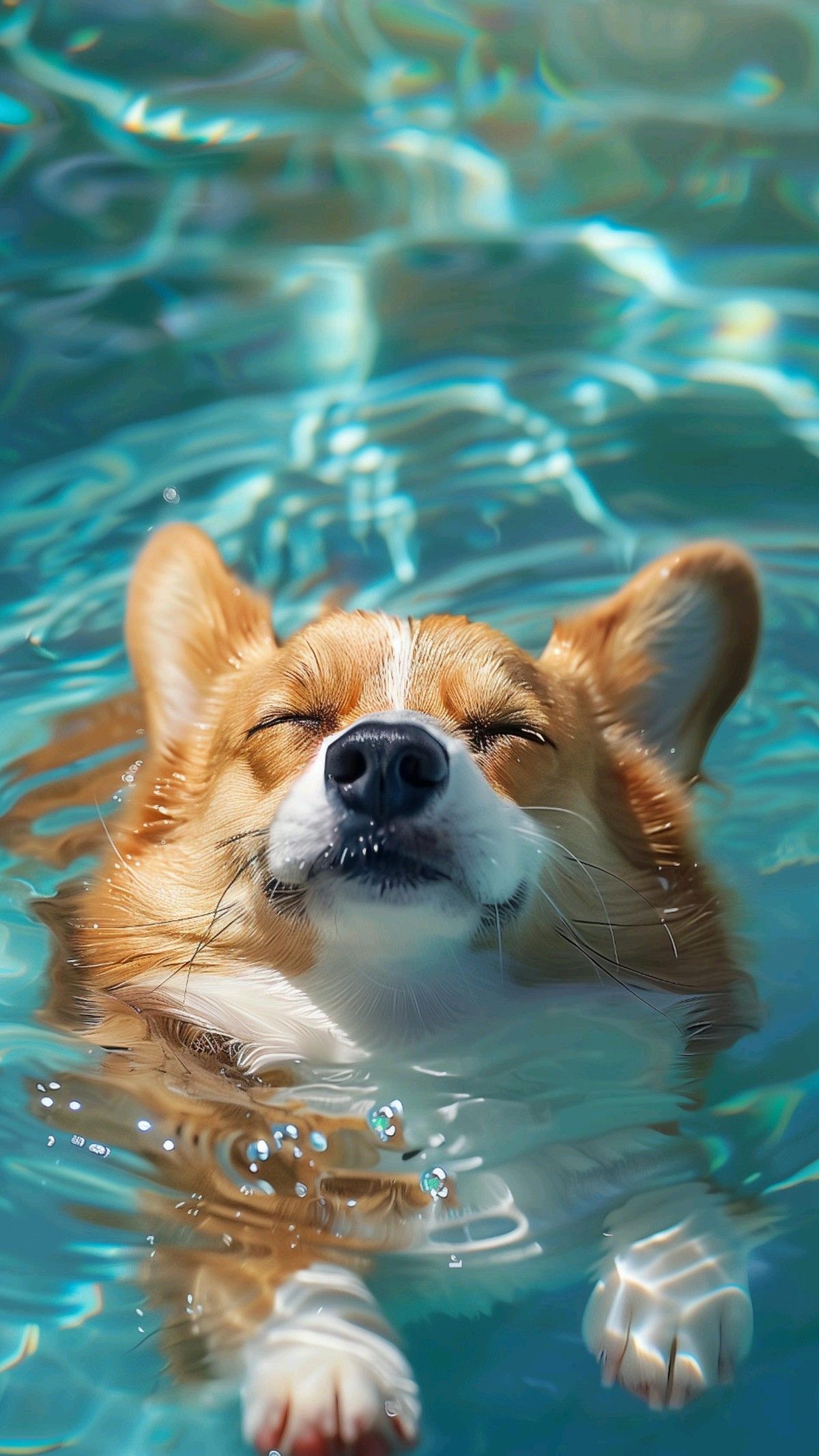Dog / Detail
Dogs and Swimming: A Natural Ability with Precautions
Jonathan Bennet | 10 October 2024 | 12:05
Dogs have a natural affinity for water, often displaying a playful and enthusiastic attitude towards swimming. While many breeds are instinctively good swimmers, it's essential to understand their limitations and take necessary precautions to ensure their safety.
Swimming can be a fun and enriching experience for dogs, providing exercise, mental stimulation, and opportunities for bonding with their owners.
By understanding your dog's swimming abilities, taking necessary precautions, and providing positive reinforcement, you can help them enjoy a safe and enjoyable aquatic adventure.

Natural Swimmers vs. Cautious Canines
Not all dogs are created equal when it comes to swimming. Breeds with a strong build, such as Labrador Retrievers, Golden Retrievers, and Newfoundlands, are typically natural swimmers. They possess webbed feet, a dense double coat, and a powerful build that aids in buoyancy and propulsion.

On the other hand, breeds with a short, sleek coat, such as Greyhounds or Dobermans, may find it more challenging to stay afloat due to a lack of insulation and natural buoyancy.
Safety First: Precautions for All Dogs
Regardless of breed, it's crucial to prioritize safety when taking your dog swimming. Here are some essential precautions:

Life Jacket: For dogs that are less confident or not strong swimmers, consider investing in a canine life jacket. These flotation devices provide added buoyancy and can help prevent drowning.
- Shallow Water: Start in shallow water where your dog can easily touch the bottom. Gradually increase the depth as your dog becomes more comfortable and confident.
- Supervision: Never leave your dog unattended near water. Always supervise them closely, even if they are strong swimmers.
- Freshwater vs. Saltwater: While most dogs can swim in both freshwater and saltwater, saltwater can be more irritating to their skin and eyes. Rinse your dog thoroughly with freshwater after swimming in saltwater.
- Harmful Algal Blooms: Be aware of harmful algal blooms, which can be toxic to dogs. Avoid swimming areas where there are signs of algae or discolored water.
- Currents and Undertows: Be mindful of strong currents and undertows, which can pose a danger to even the strongest swimmers. Choose calm and sheltered areas for swimming.
- Heatstroke: Dogs can easily overheat, especially in hot weather. Ensure access to plenty of shade and fresh water. Limit swimming on extremely hot days.
Training Your Dog to Swim
If your dog is hesitant or unsure about swimming, you can gradually introduce them to the water through positive reinforcement training. Here are some tips:

- Start Slowly: Begin by letting your dog wade in shallow water and play with water toys. Reward them for any positive interaction with the water.
- Positive Reinforcement: Use treats, praise, and toys to motivate your dog. Avoid punishment or negative reinforcement, as this can create fear and anxiety.
- Gradual Progression: Gradually increase the depth of the water and the duration of swimming sessions. Go at your dog's pace and allow them to progress at their own comfort level.
- Professional Help: If you encounter difficulties or have concerns about your dog's swimming ability, consider seeking guidance from a professional dog trainer or behaviorist.

Maximum Water Depth and Limitations
While there is no definitive maximum water depth that all dogs can tolerate, it's generally advisable to keep them in water that is no deeper than their chest height.
This allows them to easily touch the bottom and maintain their balance. However, some dogs may be more comfortable swimming in deeper water, especially if they have a strong build and are confident swimmers.

Common Concerns and Misconceptions
- Ear Infections: Dogs can develop ear infections from swimming, especially in dirty or contaminated water. Use earplugs or ear cleaner specifically designed for dogs to help prevent this.
- Swimming and Joint Health: While swimming is generally a low-impact exercise that can benefit dogs with joint issues, it's essential to consult with your veterinarian before starting a new exercise regimen.
- Dog Paddle vs. Freestyle: Dogs typically use a natural paddling motion, similar to the breaststroke, rather than the freestyle stroke used by humans.
Related
-

The Healing Power of Dogs: How Canine Therapy is Revolutionizing Mental Health and Boosting Positive Energy in Humans
Dog14 November 2024
-

A Pawsitive History: Dogs of Nuremberg
Dog09 November 2024
-

The Role of Oxytocin in the Human-Dog Bond: The Science Behind Our Deep Connection
Dog06 November 2024
-

Beyond the Beach: Jamaica's Dog Lovers
Dog29 October 2024
-

A Dog's Delights: Homemade Snacks for Our Furry Babies, Recipes Included!
Dog29 October 2024
-

A Dog's Disorientation: Understanding Your Dogs' Wanderlust
Dog29 October 2024
Popular
-

-

A Pawsitive History: Dogs of Nuremberg
09 November 2024 -

-

Beyond the Beach: Jamaica's Dog Lovers
29 October 2024 -
